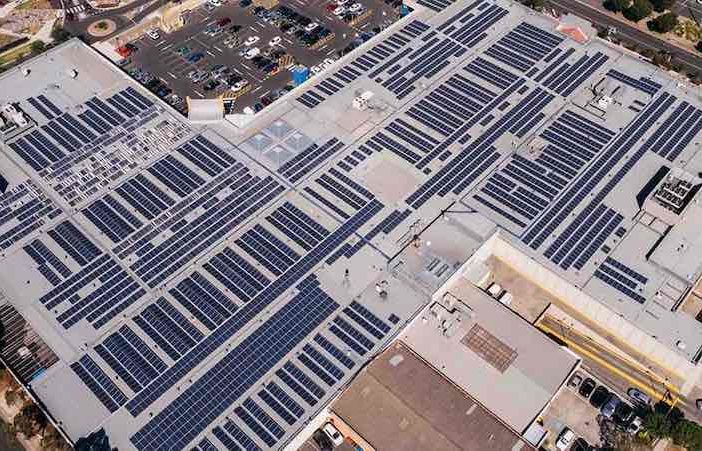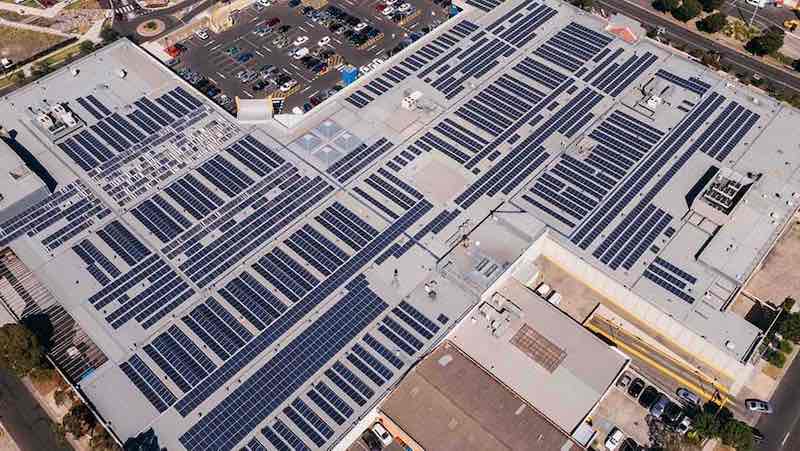

The aptly named suburb of Sunshine in Melbourne’s west is now home to one of the city’s largest commercial solar installations, as shopping centres continue to seize the benefits of rooftop solar.
The Sunshine Plaza shopping centre in Melbourne’s west, has installed one of Melbourne’s largest commercial rooftop solar installation, enough to provide 45% of the centre’s energy needs.
The shopping precinct’s managements sees the integration of such a large solar installation as part of its response to growing demand for sustainability measures from the wider community.
“We understand we have a considerable footprint in our community, which is why we’ve made significant investment towards Sunshine Plaza’s solar project.” Centre manager Ian Simpson said.
The 1.04 MW solar installation, using available roof space at the centre, will allow the shopping centre manager to pass through energy savings to the centre’s tenants, reducing the emissions footprint of the centre by around 1,500 tonnes annually.
The system, which incorporates 4,175 solar panels, will generate over 1,400MWh each year, enough to power 245 homes. Electricity produced by the system will be used by the shopping centre.
The solar installation is the latest step in a range of sustainability measures undertaken by Sunshine Plaza. The installation follows investments in LED lighting.
“The project encompasses all aspects of what we can do for Sunshine, with particular emphasis on people, sustainability, environment and the community,” Simpson added.
Shopping centres have become an increasingly attractive host for large-scale solar projects. The combination of a large amount of available roof space, with a demand load that aligns well with solar generation, means they are the ideal location for such installations.
Major commercial property managers, including Vicinity, Stocklands, GPT and Lend Lease, have all committed to the roll out of rooftop solar systems on their retail property assets.
The property sector has sought out opportunities to reduce the emissions footprint of its commercial property investments. This shift has been in response for demand for decarbonised investment opportunities, as well as to take advantage of the cost savings opportunities that solar systems provide.
Many of Australia’s largest property investors have signed onto a Net Zero Carbon Buildings Commitment, as an initiative of the World Green Building Council.




